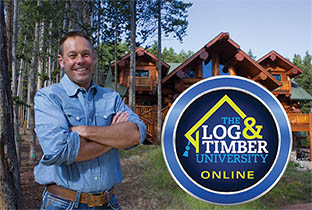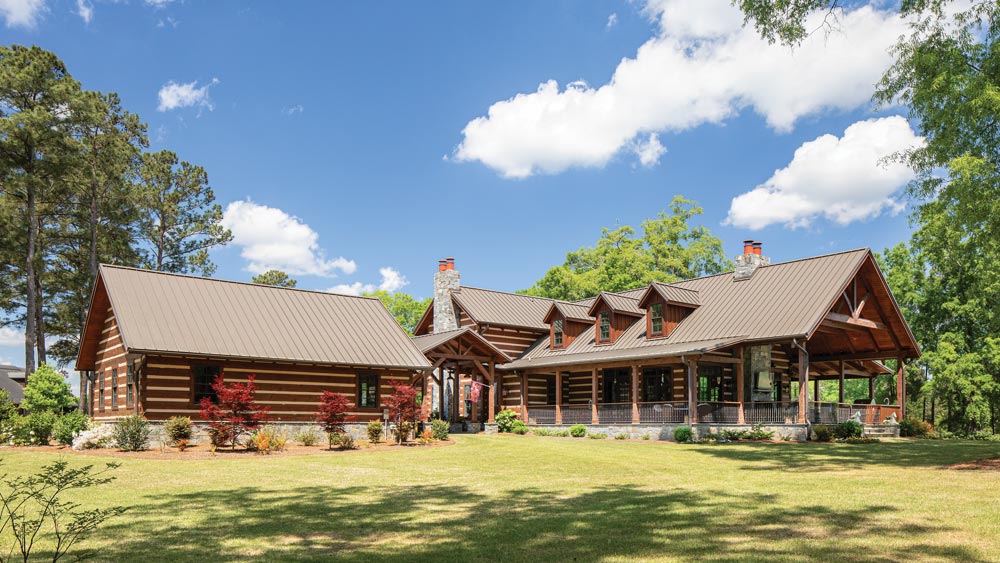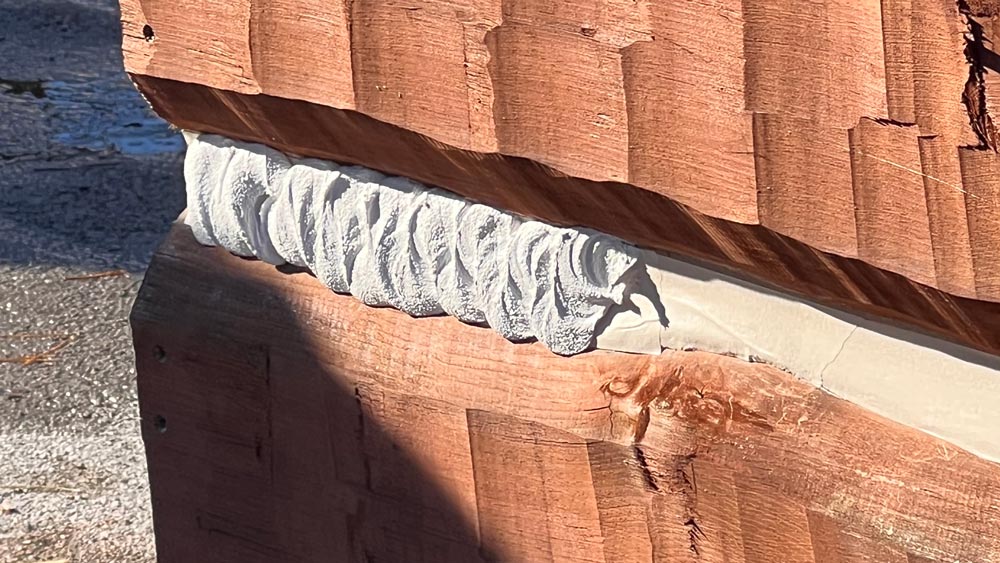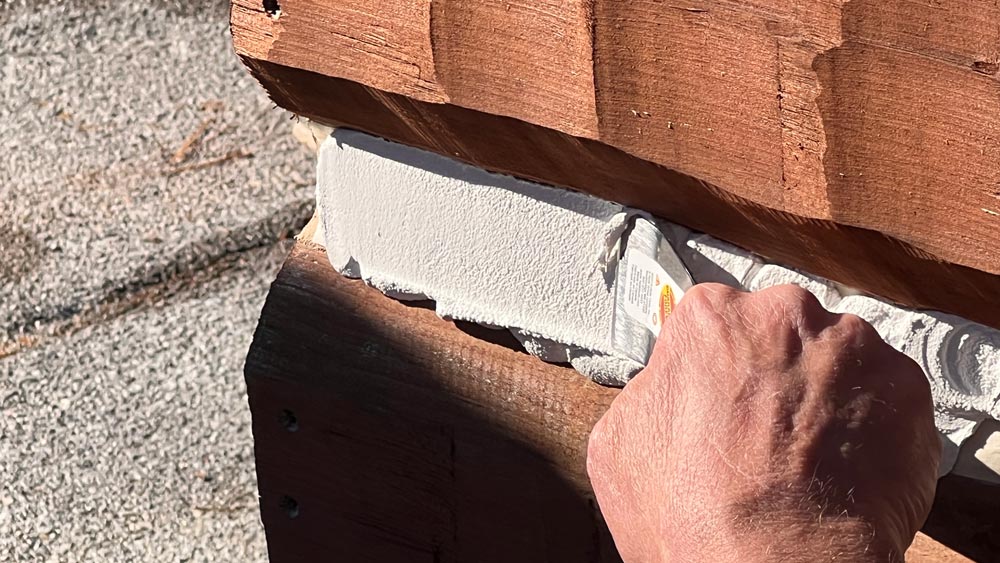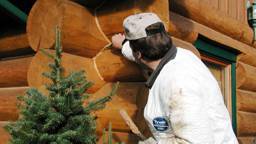Historically, log courses were filled with materials that were regionally available. In northern Europe, they used a special moss that didn’t cause log rot. In the U.S. and other places, builders would mix horsehair or grass with mud or clay to seal the spaces between the logs and enclose the home.
Today’s chinking is a scientific breakthrough, using a flexible yet adherent synthetic makeup that bridges the gaps formed by both round and square handcrafted logs.
While the natural texture makes chinking an appealing option from a design standpoint, the material has other, more important, work to do. Perma-Chink Systems, a top manufacturer of log stains and sealants, shares four distinct qualities that set chinking apart from other options:
- Chinking is breathable to let moisture escape the wood, while preventing new moisture from entering.
- Chinking has elastic qualities, so it can move with wood’s daily and seasonal expansion and contraction.
- Chinking sticks to the gaps between the logs, even for log homes where the chinking remains invisible.
- Chinking resists the weather’s relentless tests — snow, rain, heat and ice.
So even though milled logs — especially those with tongue-and-groove joinery — don’t need chinking, adding it to your plans can transform a log home from a mountain ski chalet to a country farmhouse in a snap.
